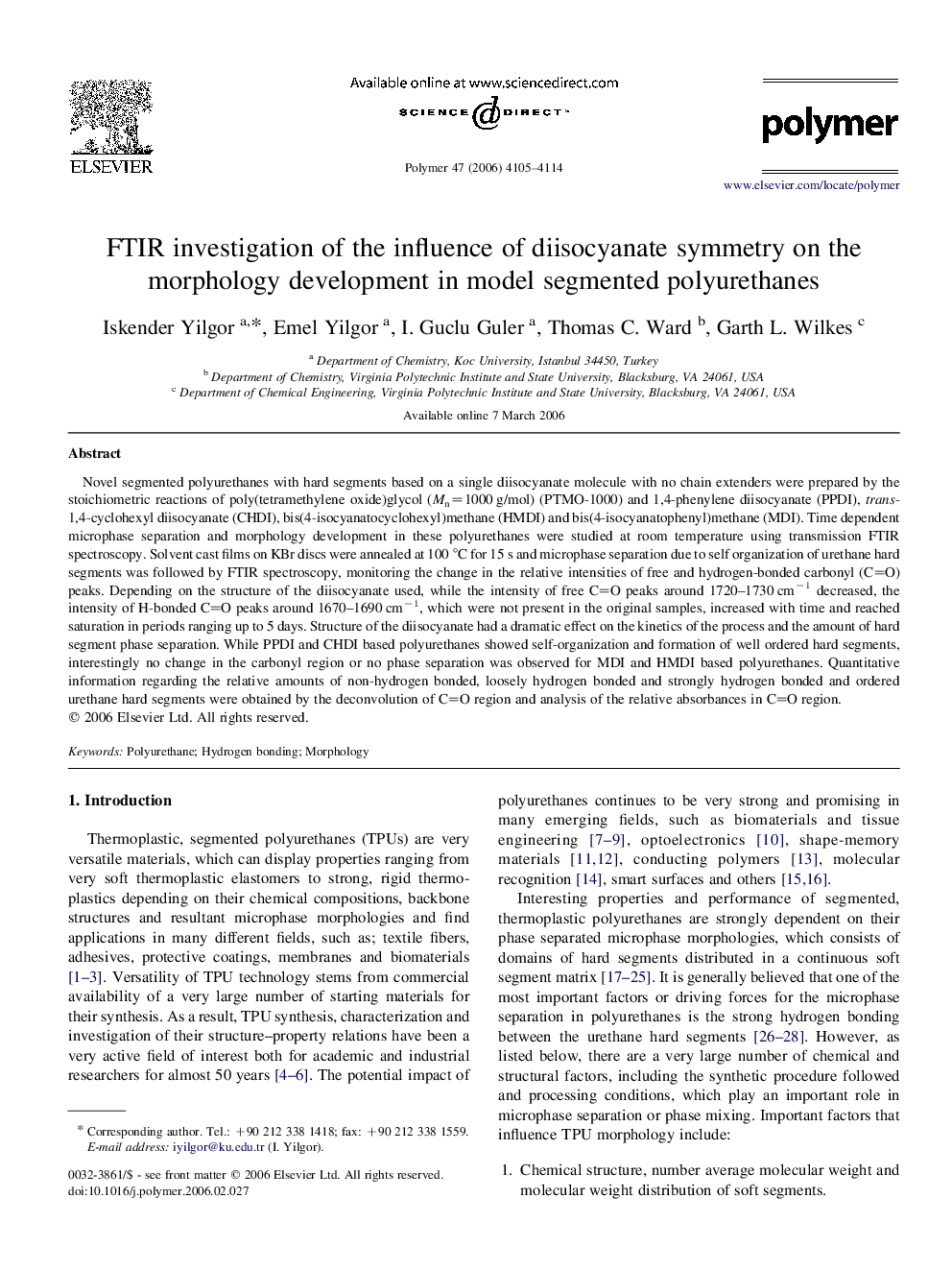| کد مقاله | کد نشریه | سال انتشار | مقاله انگلیسی | نسخه تمام متن |
|---|---|---|---|---|
| 5190070 | 1381196 | 2006 | 10 صفحه PDF | دانلود رایگان |
عنوان انگلیسی مقاله ISI
FTIR investigation of the influence of diisocyanate symmetry on the morphology development in model segmented polyurethanes
دانلود مقاله + سفارش ترجمه
دانلود مقاله ISI انگلیسی
رایگان برای ایرانیان
کلمات کلیدی
موضوعات مرتبط
مهندسی و علوم پایه
شیمی
شیمی آلی
پیش نمایش صفحه اول مقاله

چکیده انگلیسی
Novel segmented polyurethanes with hard segments based on a single diisocyanate molecule with no chain extenders were prepared by the stoichiometric reactions of poly(tetramethylene oxide)glycol (Mn=1000 g/mol) (PTMO-1000) and 1,4-phenylene diisocyanate (PPDI), trans-1,4-cyclohexyl diisocyanate (CHDI), bis(4-isocyanatocyclohexyl)methane (HMDI) and bis(4-isocyanatophenyl)methane (MDI). Time dependent microphase separation and morphology development in these polyurethanes were studied at room temperature using transmission FTIR spectroscopy. Solvent cast films on KBr discs were annealed at 100 °C for 15 s and microphase separation due to self organization of urethane hard segments was followed by FTIR spectroscopy, monitoring the change in the relative intensities of free and hydrogen-bonded carbonyl (CO) peaks. Depending on the structure of the diisocyanate used, while the intensity of free CO peaks around 1720-1730 cmâ1 decreased, the intensity of H-bonded CO peaks around 1670-1690 cmâ1, which were not present in the original samples, increased with time and reached saturation in periods ranging up to 5 days. Structure of the diisocyanate had a dramatic effect on the kinetics of the process and the amount of hard segment phase separation. While PPDI and CHDI based polyurethanes showed self-organization and formation of well ordered hard segments, interestingly no change in the carbonyl region or no phase separation was observed for MDI and HMDI based polyurethanes. Quantitative information regarding the relative amounts of non-hydrogen bonded, loosely hydrogen bonded and strongly hydrogen bonded and ordered urethane hard segments were obtained by the deconvolution of CO region and analysis of the relative absorbances in CO region.
ناشر
Database: Elsevier - ScienceDirect (ساینس دایرکت)
Journal: Polymer - Volume 47, Issue 11, 17 May 2006, Pages 4105-4114
Journal: Polymer - Volume 47, Issue 11, 17 May 2006, Pages 4105-4114
نویسندگان
Iskender Yilgor, Emel Yilgor, I. Guclu Guler, Thomas C. Ward, Garth L. Wilkes,